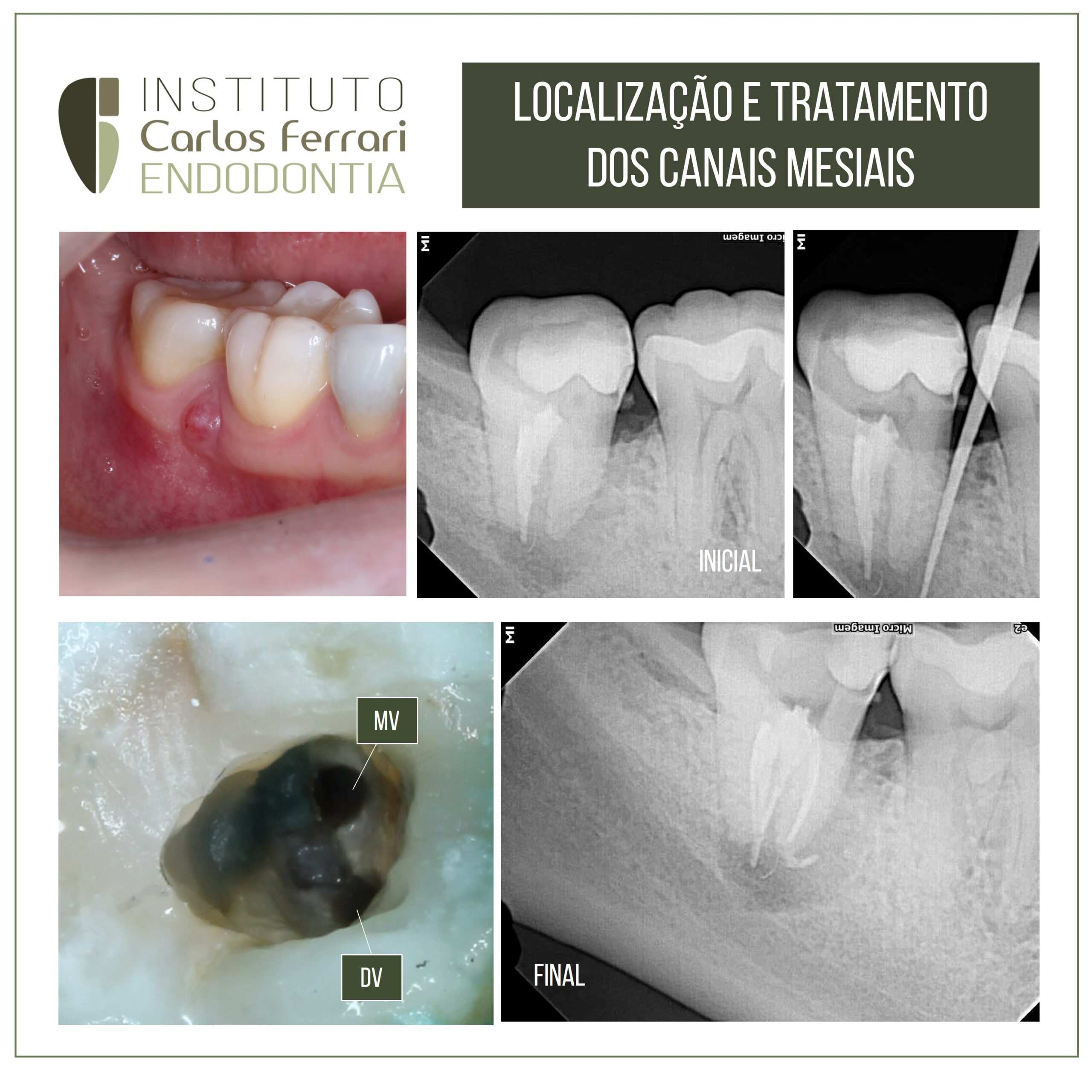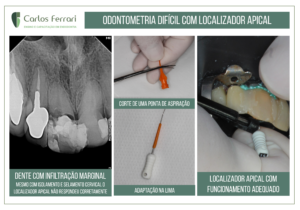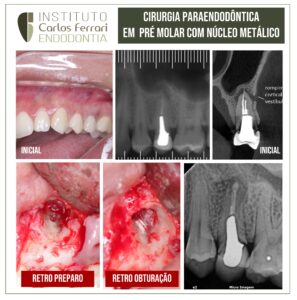Retratamento seletivo de canais mesiais.
Colega endodontista indicou o paciente para localização dos canais mesiais com auxílio de microscopia. Paciente tinha uma fístula relacionada à mesma raiz. O tratamento do canal distal foi realizado segundos rigores da técnica e, portanto, não foi acessado.
Com auxílio de microscopia e ultrassom, os canais foram localizados e tratados. Houve remissão dos sinais e o paciente foi orientado para proservação.

Retratamento endodôntico seletivo
In: Nudera.Selective Root Retreatment: A Novel ApproachJ Endod 2015; 1–7.
Resumo
O retratamento do canal radicular é tradicionalmente considerado uma abordagem de tratamento “tudo ou nada”. É normalmente recomendado que todos os materiais restauradores e de obturação devem ser removido de todas as raízes, independentemente da presença ou ausência de patologia periapical. Ao contrário, a cirurgia a endodontia não é vista como um tratamento com abordagem “tudo ou nada”, Tradicionalmente, apenas a(s) raiz(es) doente(s) é(são) abordada(s) por meio de ressecção apical e obturação apical.
O uso da tomografia computadorizada de feixe cônico permite uma avaliação mais precisa da condição periapical de raízes individuais. Esta informação introduziu uma nova e conservadora alternativa de tratamento para dentes previamente tratados endodonticamente com múltiplas raízes apresentando doença pós-tratamento. Esta nova abordagem é denominada retratamento radicular seletivo. Imagem avançada permite ao clínico tomar decisões de tratamento previsíveis com relação à presença ou ausência de patologia periapical de raízes individuais, em vez de tomar suposições sobre o dente como um todo. Seletivo retratamento radicular combina a abordagem de tratamento não cirúrgico retratamento com a seletividade da ressecção cirúrgica da raiz. Desta forma, o retratamento pode ser limitado a uma única raiz ou raízes mostrando claramente a patologia periapical enquanto deixa a(s) raiz(es) sem nenhum sinal visível ou percebido patose intocada.
Retratamento endodôntico seletivo.





